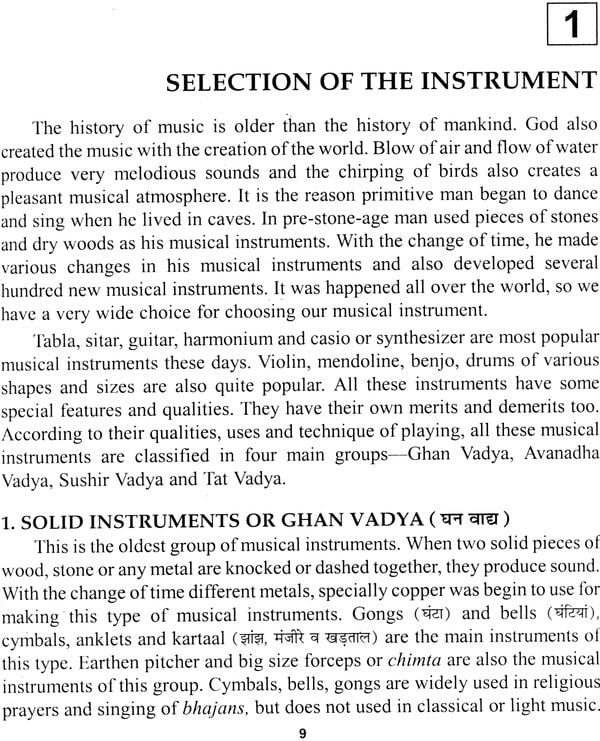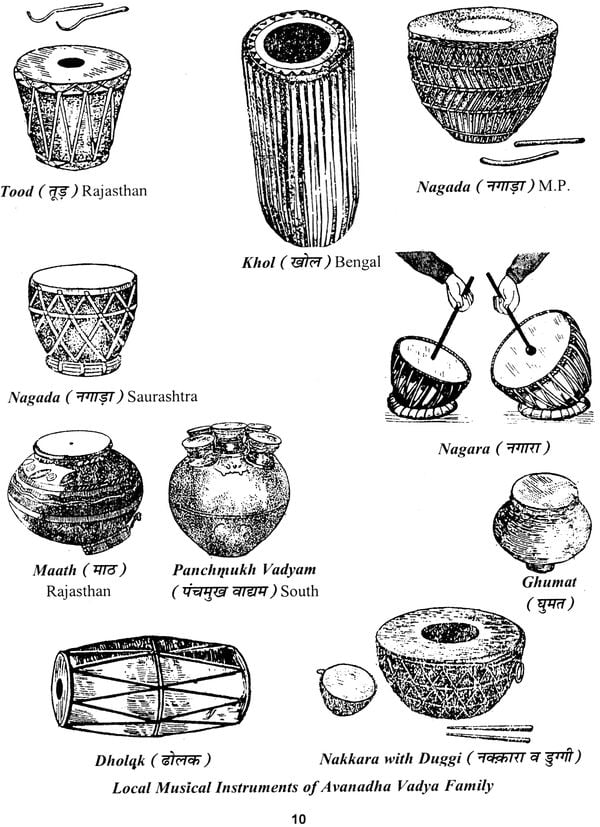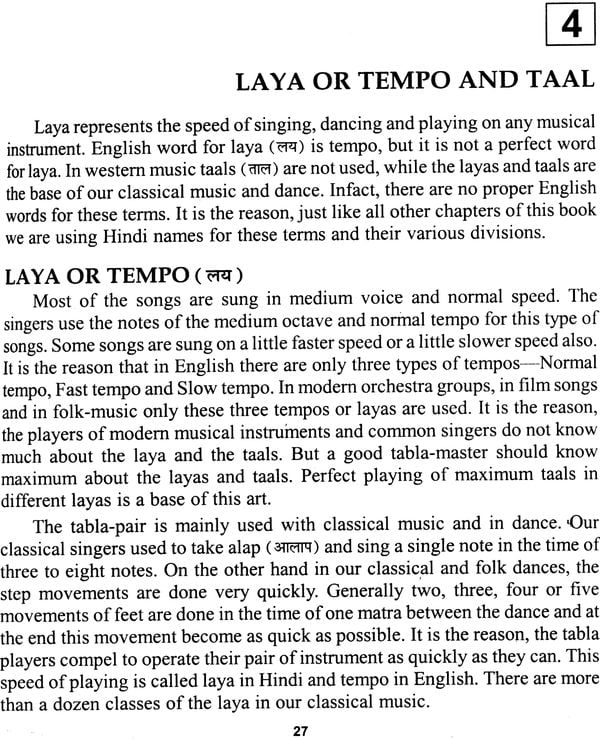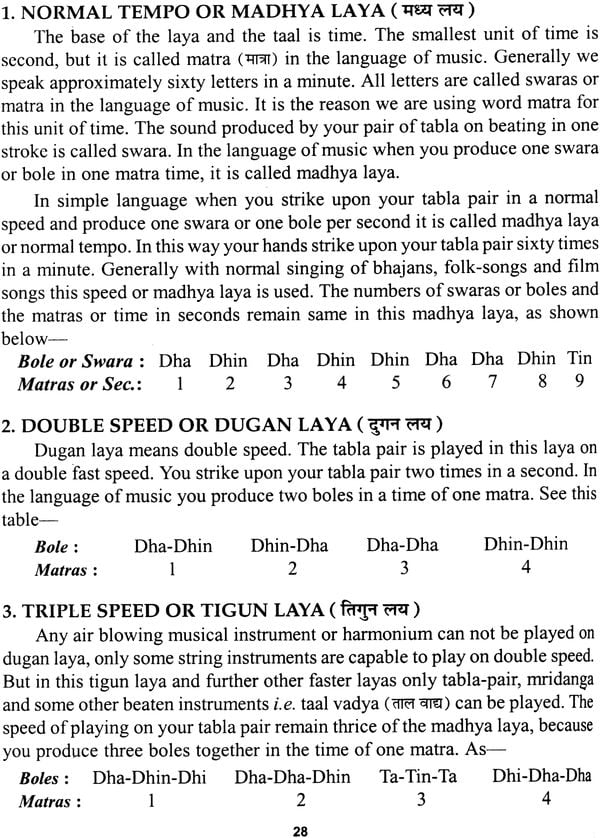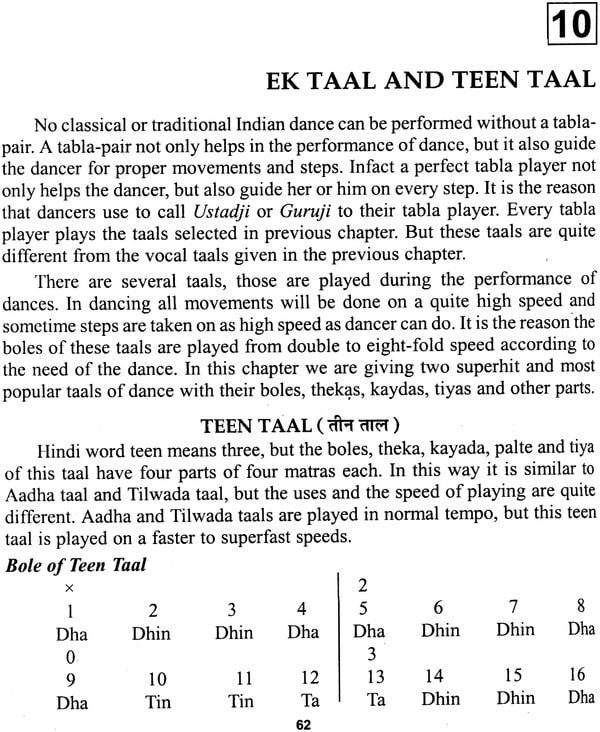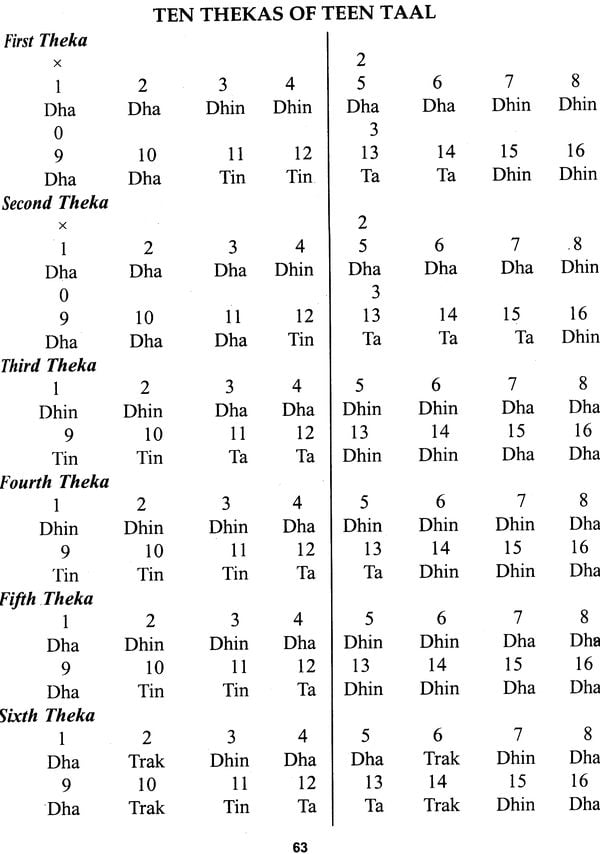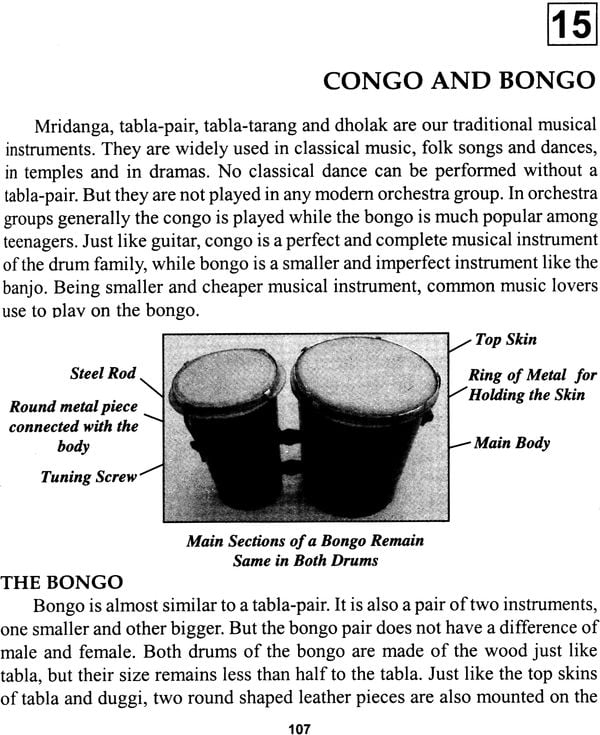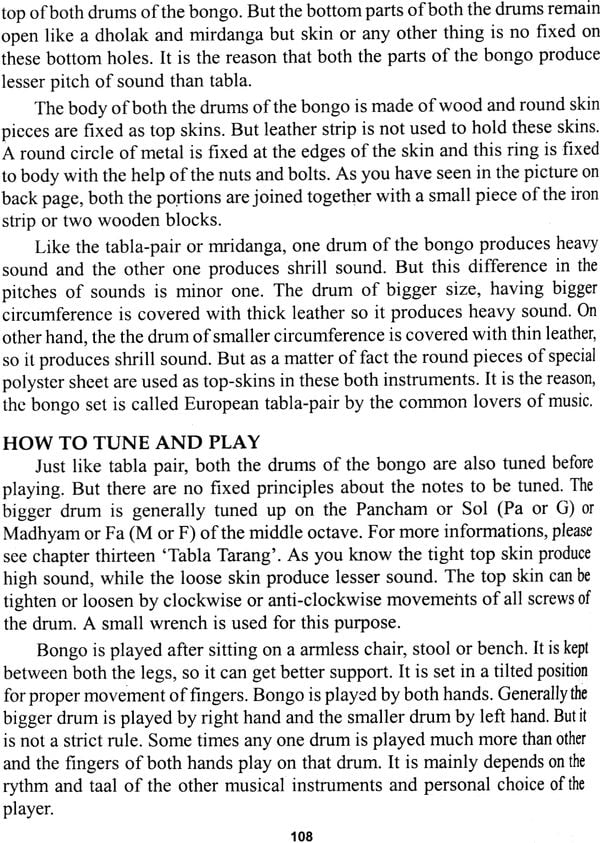
How To Play Tabla: Mridanga, Kongo, Bongo and Tabla Tarang
Book Specification
| Item Code: | IDF485 |
| Author: | Krishana Kumar Agrwal & Hazi Shabban Khan |
| Publisher: | Manoj Publications, Delhi |
| Language: | English |
| Edition: | 2019 |
| ISBN: | 9788131005279 |
| Pages: | 111 (B & W Illus: 49 , Figures: 44) |
| Cover: | Paperback |
| Other Details | 9.6" X 7.5" |
| Weight | 290 gm |
Book Description
A man can live without food and water for some days, but he could live without music hours together. Primitive man began to use singing and dancing before he started rearing animals and the base of human civilisation, culture and religion is music. Like the universe, our world and all things of the world, music is also created by god singing sounds made by the flow of water and blowing of air are natural sources of music. According to Hindu religion the music. According to Hindu religion the created of music are god Shiva and goddess sarswati. our Lord Kridhna was a perfect player of the flute and a marvellous dancer. All these stories openly says one thing, that music is the first art adopted by the primitive man.
Music is not only the oldest art also. It is not only an complete art, but an living art too. The river of this art never flow downward. With the change of time and development of civilisation man created a large numbers of musical instruments. Like Casio or synthesizer some instruments are latest, like harmonium and guitar some were invented in 17th or 18th century. But most of these are several thousands years old. Tabla is a musical instruments which was invented by primitive man when he was living in caves.
Tabla produce sound by beating its upper most surface by hands. There are hundreds of this type of musical instruments in the world and all of the them are used widely. In our country more than fifty of this type of instruments are used, but it is the table-pair which is known as the king of this group. Our classical dances could not perform without playing on the table - pair. It is also plays the most important role in classical music. Dancers dance on the tune of the table, while all others players of he musical instruments follow the tune. It is reason that operators of the tabla are called table-master or gurus (teacher) in the world of music. It is the reason that – master gets much respect and reward in almost every musical programme.
Playing on table pair is not as easy as it seems. Sound health and regular practice of hours together are must for becoming a perfect table-mater. Tabla is a set of two independent instrument and both are tuned before playing hand and other by the left hand. Proper playing need good knowledge of the tuning of the both parts and proper movements of fingers. These are the reason that in the beginning you may feel it a bit difficult. But infact this difficulty is not a problem, this book is quite capable to provide you complete guidance in a very simple and interesting way.
Most of the table players used to become professional table- master in a few years. It is the most wonderful aspect of this art, that playing on table is a best profession having minimum competition with maximum bright future. If to want to make music your career, than this book will be prove a complete guide and best teacher. The simple languages and relative photograph and diagrams are the main features of this book. You may become the perfect player of table and a master musician with he help of this book, It is our promise.
| 1 | Selection of the Instrument Classification of the musical instruments, their uses, merits and limitations and the role of the tabla in the field of music. | 9-14 |
| 2 | Know Your Tabla Its history and importance, comparison between the tabla pair and the mridanga, shapes of tabla, duggi and dhama. Main parts of these instruments with their settings. | 15-21 |
| 3 | Tune Your Tabla Pair Selection of proper notes or swaras for the tabla tuning and practical ways of tuning. How to increase and decreasethe pitches of sounds of the tabla, dagga and dhama. | 22-25 |
| 4 | Laya or Tempo and Taal Definitions of the laya and taal, their uses in tabla-vadan and their main classes and groups. | 26-30 |
| 5 | Production of Various Boles on Tabla Pair Seven basic boles or varnas, elevenboles produced on the tabla and four boles of duggi or dhama with all combined boles. Production of each bole with photographs of proper actions. | 31-38 |
| 6 | Selected Technical Terms Sam or Sum,Taali, Khali, Theka, Mohara, Mukhada, Gat,Paran, Tukada, Uthan, Kayada, Palta, Peshkar,Laggi, Bant, Rela, Sangat And Tihaee. | 39-41 |
| 7 | Mohare, Mukhade and Uthans Boles of three moharars, two mukhdas, three uthans and one theka with sam, taalis and khalis. | 42-45 |
| 8 | Proper Postures for Playing Four traditional styles of sitting with several modern styles. | 46-50 |
| 9. | Taals for Vocal Music 29 easy to play taals, played with film songs, folk music and sugam shastriya sangeet. | 51-61 |
| 10. | Ek Taal and Teen Taal Complete boles with Thekas, Kayada, Tiyas and Paltas. | 62-70 |
| 11. | Other Famous Taals 51 taals used in dances, classical music, sugam sangeet, folk songs and also played in solo form | 71-88 |
| 12. | Some Uncommon Taals 33 popular taals of small size | 89-97 |
| 13. | Tabla-Tarang Its importance and limitations, selection, setting and tuning of the tablas and proper playing | 98-103 |
| 14. | Mridangam or Pakhawaz Parts of the mridang with its boles and proper playing. | 104-106 |
| 15. | Congo, Bongo and Jazz Complete description of these three European instruments with their tuning and playing | 107-112 |
